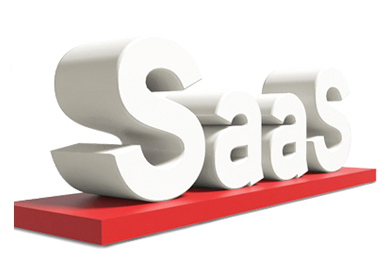
The term Software-as-a-Service (Saas) has been around for over a decade which is more than enough time for everyone to get familiar with it. In fact, SaaS has become so widespread that Gartner recently estimated the global SaaS market will grow by 19.5% reaching $32.8 billion in 2016. Supporting this is a recent report on the global SaaS market by US consultancy Siemer and Associates which highlights that 83% of companies expect to adopt SaaS technology. Yet many still don't quite understand what SaaS is all about. Today we will tackle SaaS technology, its origins and applications in the burgeoning field of HR Software.
Two decades ago, if a business had complex processes that required its own program, they had to build it for themselves or buy it. Building the program involved going out and look for a capable developer and investing in physical data centres to bring it into life, which required a large budget. The other option was to get an external party to design it and then buy it, which did not come cheap either.
But that’s not all. These businesses then had to incur additional costs of training their staff and maintaining the system regularly with updates and fixes. Overall, costs involved with buying or building bespoke applications are so great that they are generally considered capital expenditure.
At the turn of the century, Application Service Providers (ASPs) came into the picture, according to Service-Now’s A Brief History of SaaS. These providers delivered an alternative to on-premise applications, becoming brokers of legacy applications that companies did not want to own or manage themselves. The APSs were responsible for maintaining the client server but soon found challenges in delivering the services efficiently. These costs eventually surpassed costs of on-premise applications.
Later, with the dawn of the Internet, these applications / programs were built on cloud platforms rather than physical data centres, and that’s how SaaS was born. Simply put, SaaS is about using software from a provider for a fixed monthly fee. The provider takes on the role of developing the complex program and various add-ons (customisations) for the customer, hosting the applications on their cloud-based data centre and maintaining the application (upgrades and fixes) on behalf of the customer. Therefore instead of buying these programs, businesses are now simply renting them, and capital expenditure was transformed into operating expenditure.
The concept of SaaS has been likened to the automobile industry. Software, like automobiles, require regular updates, and therefore depreciate quickly. From a business’ commercial perspective, they are more likely to lease vehicles rather than purchase them. Therefore when SaaS came about, more and more businesses started questioning the need to invest significant capital expenses into developing software that will be outdated in a matter of months. They jumped on the SaaS bandwagon, leasing various applications from providers for a fee and have enjoyed significant cost efficiencies since.
How has SaaS impacted HR?
SaaS has already made its way into, and dominated, some industries – Customer Relationship Management (CRM), Accounting and Project Management to name a few. SaaS is yet to take over Recruitment and HR, but John Moore of CIO.com disagrees and claims that SaaS HR software is ready to take off.
Appirio, a cloud service provider in the US recently estimated that “up to 90% of the Fortune 1000 companies will replace or re-implement its core HR system in the next four years”. They attribute this to legacy systems and software that pre-dates the Internet, which are too old to meet the needs and expectations of employees and managers.
The market now has a range of SaaS HR programs that cover various aspects of the HR function:
- Recruitment
- Talent Management
- Hiring
- On-boarding
- Training / Learning Management System
- Payroll
- Personnel Tracking
- Performance Review and Appraisals
Essentially, with SaaS, HR executives have the ability to choose the software / application / program from a multitude of vendors to find the ones that are best suited to their current needs and business process.
Indisputably, costs will be brought down significantly as these programs are rented instead of purchased, and process efficiencies will increase as these programs are customised according to a business’ needs and requirements.
When it comes down to it, SaaS brings greater efficiencies for HR. We’ll delve further into the benefits SaaS brings to HR in our next blog.
If you are interested in learning more about SaaS, why not try and obligation free trial of Subscribe-HR's integrated suite of 9 Cloud based Human Resource Management Software solutions.


